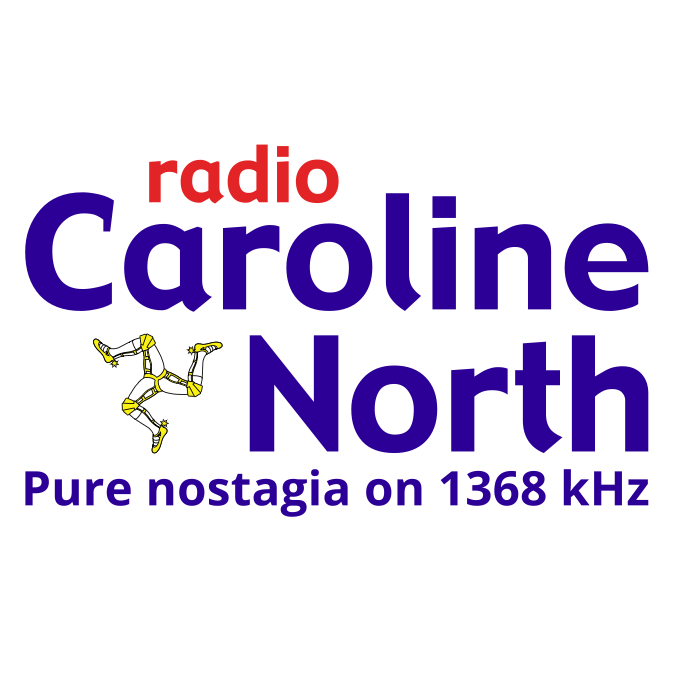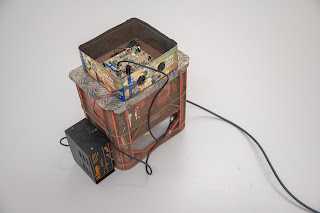The Beginning, the Middle and the End of Monaghan’s Radio Caroline North
For numerous weekends throughout the year, a piece of pirate radio nostalgia wafts it way over the airwaves courtesy of Manx Radio on the Isle of Man. Manx Radio transforms into Radio Caroline North which was once an offshore pirate radio station on board the MV Caroline[1] ship. The ship was anchored off the Manx coast from July 1964 until March 1968[2] following the introduction of the new Marine Offences Act aimed at the closing the growing number of offshore pirate radio stations bombarding UK and Irish listeners. Radio Caroline North quickly grew a large following across Ireland. While offshore pirate Radio Caroline North closed in 1968, onshore pirate station Radio Caroline North met a swift end outside the small County Monaghan village of Scotshouse in November 1975. This is their story.
It starts back in 1971 with Sean McQuillan from Clones and another station Radio 99. It opened in April 1971 broadcasting on 199m Medium wave and set up by four friends to broadcast a non-political content with a diet of country and western music. The station was originally located in a spare bedroom in McQuillan’s house. The station later moved to a disused house just inside the County Fermanagh border and was on air three hours Saturday and Sunday nights from 9.30pm opening each night with their signature tune Slim Whitman’s ‘What’s the World a Coming To’.
The station provided a postal address for requests of 6, Millbrook, Clones, County Monaghan but after just a couple of months on air the station was closed by loyalist paramilitaries who intimated the young broadcasters forcing them to close and move their transmitter south of the nearby border in the middle of the night using a boat on the River Finn which was the border.
The station operators moved to Dunsrim near Scotshouse in County
Monaghan with studios now housed in a caravan. The transmitter was built by
Clones man Sean McQuillan using an ex-US army transmitter. The station actually
had three small transmitters two located south of the border and one north of
the border across the River Finn. In an interview with the Meath Chronicle[3],
McQuillan revealed that in order to stay one step of the authorities the
station moved locations ‘3 or 4 times’ and that they used old shirts and ladies
knickers to disguise the ‘60ft aerial from detection by army helicopters that
flew passed every morning’.
In September 1971 the station went off the air, bemoaned by many letter writers to local newspapers. One month later Radio 99 was back on the air with a better transmitter and signal. The station closed in June 1973 when the Gardai traced the caravan used by the station to a mountain side where they had moved to get their signal out to a wider audience. It would return a year later as Radio Caroline North. The station was now broadcasting on 266m and newspaper reports stated that the DJ’s, all using pseudonyms, were ‘Jim West, Brian Barry and Alan Gordon’. The station was broadcasting live on Sunday’s from 2pm to 5.30pm with a mixture of ‘pop, top twenty and international, hard rock, Irish and American country music and all the latest Irish showband releases.’ The station broadcast on Wednesday nights from 10pm to midnight.
He help with the costs of running the station, the station organised a
gala night of music in the Bunnoe Hall, Cavan in February 1975. The music was
supplied by the showband Gay Mac and The Seasons. The end however for Monaghan’s
Radio Caroline North in November 1975. Gardai led by Garda Sergeant William
Weldon[4]
visited the suspected site of the station on Friday November 21st
1975. They discovered the caravan in a field in the Dunsrim area near
Scotshouse. On Sunday, with the station on the air and using their Garda car to
identify the station, they visited the station and closed it down, seizing all
the equipment including the homemade transmitter that had been built by Sean
McQuillan. They also arrested three men, brothers Owen Smyth, aged 24, Charlie
Smyth, aged 23 both from Scotshouse and Andrew Slowey aged 22 from Enagh,
Lisnageer.
The following September, the three pirate broadcasters were in Clones
district court where they pleaded guilty to breaking the 1926 Wireless
Telegraphy Act. In the caravan Garda Sergeant Weldon said in court that they
seized a transmitter, tape recorder, record player and records. Garda Weldon told
the court the
Gardai were satisfied there was nothing sinister or subversive in the
broadcasts. All the defendants came from highly respectable families.
For the defendants,
solicitor Mr. J.P. Black said that the station was a hobby. The defendants had
gathered up the equipment and used it to play this country and western music on
Sunday evenings. He told the presiding Judge that the equipment was worth about
£200 and would be forfeited unless the Judge ordered otherwise. In response to
the defence solicitor said that,
‘the very possession of such equipment in these times is very
serious as it could get into the wrong hands. There must be forfeiture of the
equipment.’
There was a plea for the Probation act to be applied to the defendants but they were convicted and fined £10 each and the equipment confiscated.
It may not have helped the station’s ability to avoid interest from the authorities that the two Smyth brothers were members of the local Sinn Fein Cumman. The authorities were cognisant of the fact that just across the border the Troubles were intense and the use of the airwaves for illegal propaganda broadcasts had been an issue.
Because the station was
providing airplay to the many Showbands who had recorded singles, in November
the Sunday Independent reported that Showband manager were bemoaning the loss
of this valuable outlet for their artists.
‘Showband managers are making a bid to get a pirate radio station back "on air" despite the fact that a powerful radio transmitter and other broadcasting equipment was seized by the gardai near the Border. The seizure meant that ‘Radio Caroline North’ which had been broadcasting for the past two years on 266 metres medium wave over a fifty-mile radius of the Monaghan Fermanagh border was silenced. The pirate station received an average of a hundred requests weekly from listeners all over the area. “Several of the top names in Irish showbands have also recorded special spots for our shows”, the spokesman said. Mr. Tony Loughman, who is head of Top Rank Promotions, said: "We think it’s a pity to see this station being put off the air.’
Sean McQuillan would maintain an interest in pirate radio and would assist writer Pat McCabe to set up Radio Butty in 2006 for the local Flatlake festival with that station located in a VW van and later a caravan.























